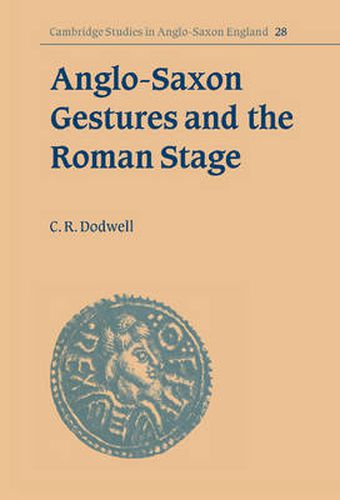Readings Newsletter
Become a Readings Member to make your shopping experience even easier.
Sign in or sign up for free!
You’re not far away from qualifying for FREE standard shipping within Australia
You’ve qualified for FREE standard shipping within Australia
The cart is loading…






This book is concerned with the pictorial language of gesture revealed in Anglo-Saxon art, and its debt to classical Rome. Reginald Dodwell was an eminent art historian and former Director of the Whitworth Art Gallery in Manchester. In this, his last book, he notes a striking similarity of both form and meaning between Anglo-Saxon gestures and those in illustrated manuscripts of the plays of Terence. He presents new evidence for dating the archetype of the Terence manuscripts to the mid-third century, and argues persuasively that their gestures reflect actual stage conventions. He identifies a repertory of eighteen Terentian gestures whose meaning can be ascertained from the dramatic contexts in which they occur, and conducts a detailed examination of the use of the gestures in Anglo-Saxon manuscripts. The book, which is extensively illustrated, illuminates our understanding of the vigour of late Anglo-Saxon art and its ability to absorb and transpose continental influence.
$9.00 standard shipping within Australia
FREE standard shipping within Australia for orders over $100.00
Express & International shipping calculated at checkout
This book is concerned with the pictorial language of gesture revealed in Anglo-Saxon art, and its debt to classical Rome. Reginald Dodwell was an eminent art historian and former Director of the Whitworth Art Gallery in Manchester. In this, his last book, he notes a striking similarity of both form and meaning between Anglo-Saxon gestures and those in illustrated manuscripts of the plays of Terence. He presents new evidence for dating the archetype of the Terence manuscripts to the mid-third century, and argues persuasively that their gestures reflect actual stage conventions. He identifies a repertory of eighteen Terentian gestures whose meaning can be ascertained from the dramatic contexts in which they occur, and conducts a detailed examination of the use of the gestures in Anglo-Saxon manuscripts. The book, which is extensively illustrated, illuminates our understanding of the vigour of late Anglo-Saxon art and its ability to absorb and transpose continental influence.